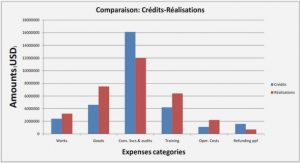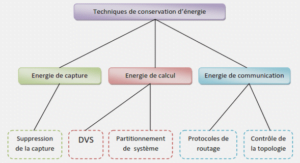Characterization of partial discharges in transformer oil
As natural degradation is often slow for testing insulation performance of transformer oil over its whole lifespan, the investigation was based on studying the aging effect with accelerated speed in laboratory conditions. The aging tests performed according to ASTM D 1934 enable studying the stability of electrical insulating oil under oxidative conditions. Transformer oils were oxidized under thermal stress and oxygen inlet, particularly in the presence of moisture and metallic particles [2]. The aging procedure was done at different aging times. For each aging time, water content, acidity, DDP, IFT, turbidity and PDIV are determined. Investigations were also performed on new oil to provide a baseline for comparison.
Experimental setup
Before starting the tests, the mineral oil was degassed and dehumidified by using a dehydrator (Figure 3.1). The drying and degassing of the liquids took place in a twostage drying unit developed at UQAC. The preparation guarantees low gas content of less than 0.5% as well as a very low water content of less than 3 ppm. The main components of the system as follows:
1- Storage tank: it is a container used for storing mineral oil before the degassing and dehumidifying procedure.
2- Pump: the aim of this pump is to circulate oil, clockwise, at a specified speed.
3- Fine filter: this consists of sheet of paper having pores of 5-um radius. The aim of this filter is to remove contaminants from the mineral oil. Ten fine filter papers were used in this system to remove contaminants.
4- Pressure reducer: the drying took place in two-stage packed columns. The insulating liquid sample flows successively through a fine filter (3), a one-way valve pressure reducer (4), a heat exchanger (5) and into the first column stage (6). In this stage, the insulating liquid flows at a pressure of PI = 1 mbar and a temperature of Tl= 50°C through Rasching rings. It is then degassed and dried before arriving into the second stage with P2 = 0.1 mbar and T2 =60°C. Here the water and gas contents continue to be reduced. The drying lowers the water content from the grade as delivered, to a few ppm (i.e. <5 ppm for mineral oil) from an initial approximate value of 80-200 ppm for liquid ester and an approximate value of 15-20 ppm for mineral oil.
5- Heat exchanger: it is a device built for transferring heat from one liquid to another without allowing them to mix. A solid separates the fluids and prevents them from mixing. One of the fluids runs through the spiral tube while the other fluid runs over them, causing it to be heated. In the system, the fluid that runs over the spiral tube is hot water while the second fluid in the spiral tube is mineral oil. The tube is spiral-shaped because it allows the oil to remain in the tubes for longer time period.
6- 1st column stage: it is a column with double septa between which there is hot water. The column contains hot oil and a large number of Raschig rings.
7- Raschig rings: they are pieces of glass tube of the same diameter and length that are used in large number. The rings provide a large surface area within the volume of the column for holding the hot oil in the column for a period of time.
8- Vacuum measuring tube: it is a pressure meter for checking vacuum in the system.
9- Ventilation valve: it is the vacuum pump entrance valve.
10- Vacuum Pump: the main purpose of this pump is to reduce the pressure in a vessel or a closed system. A quantity of gas is removed from the system with each cycle of the pump.
11- 2nd column stage: it is the second column stage that is similar to 1st column stage described in section 6.
12- Collecting tank: it is a container that is used for storing mineral oil after degassing and dehumidifying.
13- Thermostat: it is a device for controlling the temperature of the system so that it is maintained near a desired set point temperature. For this study, the correct set point is 60°C.
Influence of nanoparticles on the dielectric properties of
transformer oil
Nanofluids are finding applications in a wide variety of industries, from transportation to power engineering, in microprocessors and in micro-electro-mechanical systems (MEMS), and in biotechnology. They consist of a base liquid in which nanosized particles (1—100 nm) are suspended. The addition of nanoparticles can greatly improve the thermal and dielectric properties of the liquid, more specifically extending transformer lifespan and increasing loading/cooling capacity. The most commonly used nanoadditives include metals and metal oxides.
In this chapter, the breakdown voltage, permittivity and conductivity of mineral oil are investigated by the addition of TiO2 nanoparticles to transformer oil. TiC>2 nanoparticles were selected because of their high permittivity and high thermal constant in comparison with other nanoparticles, such as ZnO, AI2O3, SiÛ2, CuO, Fe3C>4, ZrC>3, BN, BaTiO3, A1N , etc. [6-8, 66]. Since the range of operating temperatures in Quebec varies between -50°C and +50°C, the investigations were performed at -47°C, -25°C, 0°C, 25°C and 47°C. For temperatures at or below 0°C, the tests were carried out in a climate chamber, while testing at above 0°C was performed in an oven. Nanofluids were obtained by dispersion of nanoparticles in the base fluid through the ultrasonic route. The ultrasonic mixer sends out waves that produce heat. The number of encounters between nanoparticles intensifies when the temperature increases. These collisions may lead to agglomeration or recrystallization of nanoparticles.
Material preparation and dispersion
Material selection and preparation: The base oil used as matrix was Nynas mineral oil (Nytro 10XN) [67]. Important physical properties of transformer oil that make it an excellent electrical insulator and cooling medium are as follows: low density, high dielectric strength, high specific heat and thermal conductivity, together with low viscosity and pour point to provide effective heat transfer [68]. Other general characteristics of transformer oil are relative permittivity equal to er= 2.2, resistivity greater than lxlO9 Q cm, and dielectric dissipation factor less than 0.001 at 60 Hz at 90°C .
Powder additives: TiO₂ nanopowder, white, Sigma Aldrich with, <100 nm particle size, 99.5% trace metals basis (Aldrich) .
Mixing and treatment: Five concentrations were considered, namely 0.001, 0.003, 0.005, 0.007 and 0.01 (g/ml) .
Oil-based nanofluids were prepared according to the two-step method. The nanoparticles were dispersed in mineral oil by means of an ultrasonic and magnetic stirring method to obtain a homogenous nanofluid. The procedure for preparing the nanofluids included the following phases:
• Phase 1 : Each sample was placed in ultrasonic apparatus for 60 minutes.
• Phase 2: Each sample was placed in stirring magnetic apparatus for 30 minutes.
• Phase 3: Each sample was replaced in ultrasonic apparatus for 30 minutes.
To allow the small micro-bubbles that were produced during sonification to move to the surface, the suspensions were left for two hours before any measurements were taken. After the nanofluid preparation, no extra treatment was given.
|
Table des matières
General Introduction 1
1.1 Background
1.2 Research Problem
1.3 Objectives
1.4 Methodology
1.4.1 Physical properties
1.4.2 Electrical properties
1.4.3 Chemical properties
1.5 Statement of the originality of the thesis
1.6 Overview of the Thesis
Chapter 2 Literature review
2.1 Introduction
2.2 Partial discharge
2.3 Nanofluids
2.3.1 Techniques used in the synthesis of nanofluids
2.3.2 Applications of nanofluids
2.3.3 Characterization of nanofluids
2.3.4 Enhancing oil dielectric characteristics by adding nanoparticles
Chapter 3 Characterization of partial discharges in transformer oil
3.1 Introduction
3.2 Experimental setup
3.2.1 Partial Discharge (IEC 61294)
3.2.2 Water content in oil and PDIV
3.2.3 Acidity and PDIV
3.2.4 Interfacial tension (IFT) and PDIV
3.2.5 Turbidity and PDIV
3.2.6 Dissolved Decay Product (DDP) and PDIV
3.3 summary
Chapter 4 Influence of nanoparticles on the dielectric properties of transformer oil
4.1 Introduction
4.2 Experimental setup
4.2.1 Material preparation and dispersion
4.2.2 AC breakdown voltages assessment
4.2.3 Effect of temperature and nanoparticles on breakdown voltage
4.2.4 Effect of temperature and nanoparticles on resistivity
4.2.5 Effect of temperature and nanoparticle on Dielectric constant
4.3 Summary
Chapter 5 Conclusion
![]() Télécharger le rapport complet
Télécharger le rapport complet






